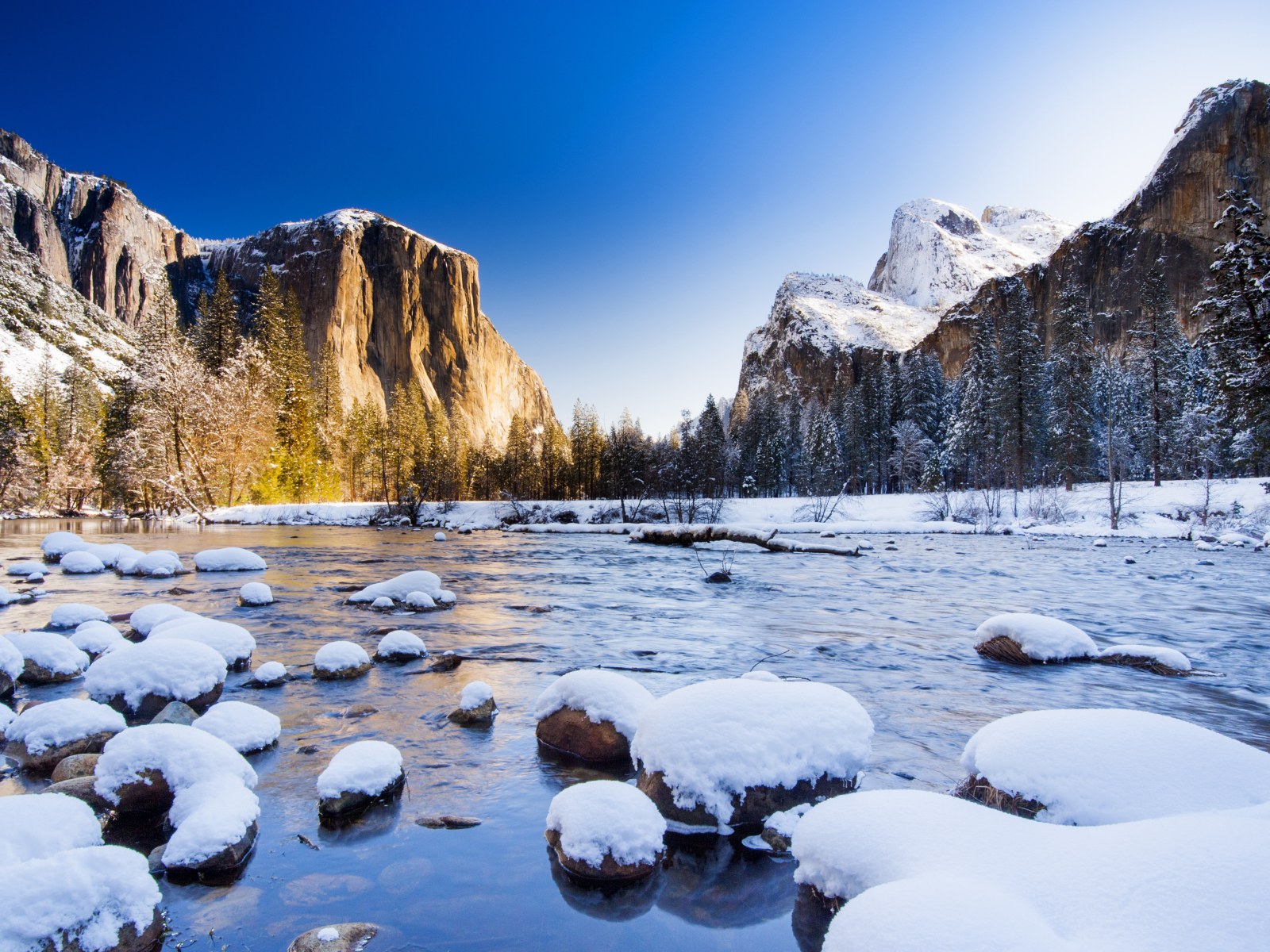A Guide to North Cascades National Park Washington State: Secrets for Nature Lovers
Washington State is a true natural gem in the northwestern United States. Its unique geographic location attracts those who appreciate scenic landscapes and a variety of natural resources. Washington is known for its picturesque mountains, vast forests and bodies of water, which make it an ideal destination for outdoor enthusiasts and nature lovers. Everything from seashores to volcanic peaks like Mount Rainier to the vast forests of the Olympic Peninsula can be found here. The eastern part of the state features large plains and arid areas that provide a contrast to the rainforests of the west.
Among the state’s top attractions are its national parks, one of the most impressive among them being North Cascades National Park. North Cascades National Park is the perfect place for those seeking solitude, peace and stunning views. Located in the northwestern part of the state, the park is known for its rugged mountain peaks, glaciers, alpine lakes and dense forests.
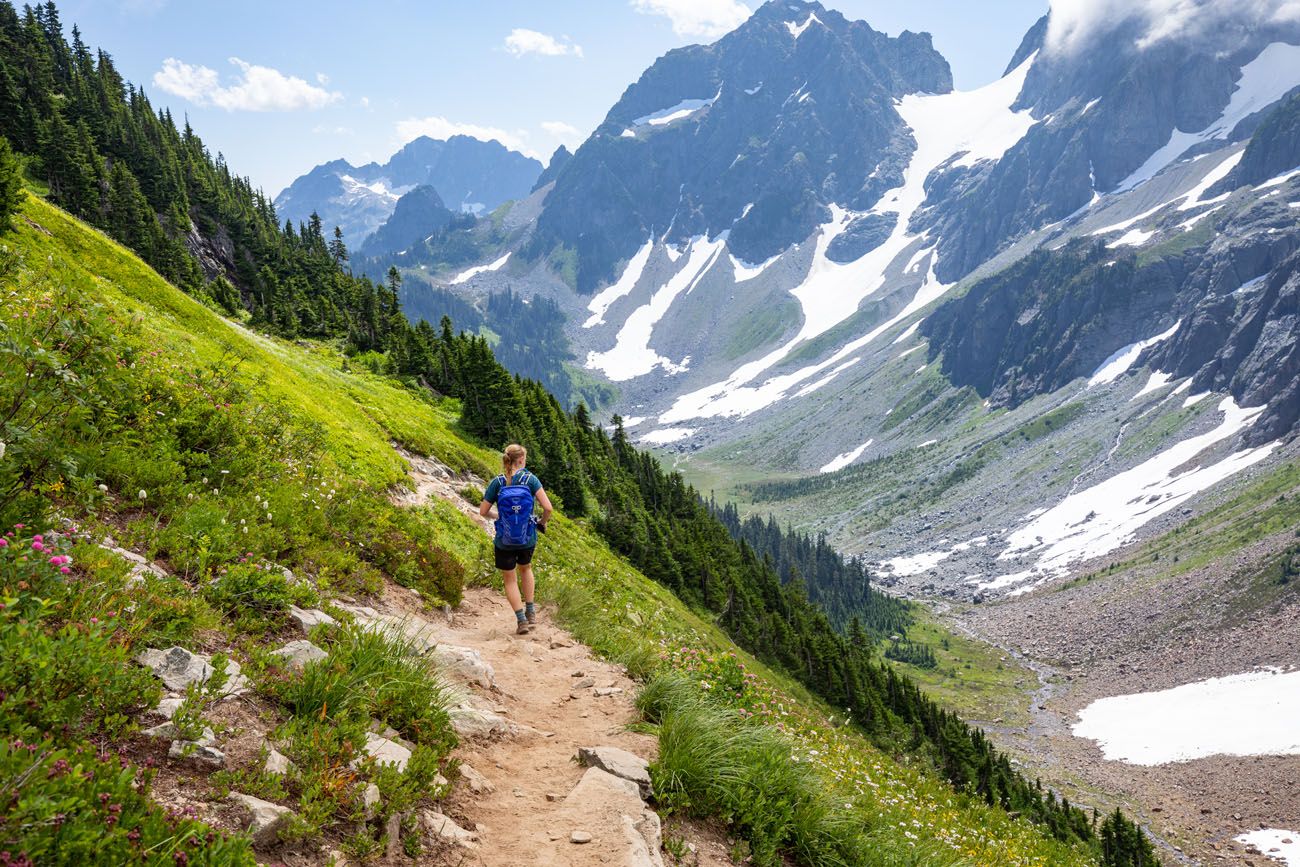
Secrets of North Cascades National Park
North Cascades National Park is a destination for true nature lovers and adventurers. It covers more than 500,000 acres of land, encompassing both mountain ranges and alpine meadows, valleys and forests. The park’s main feature is its wilderness and low number of tourists, making it a truly secluded vacation destination.
What to see
1. Glaciers
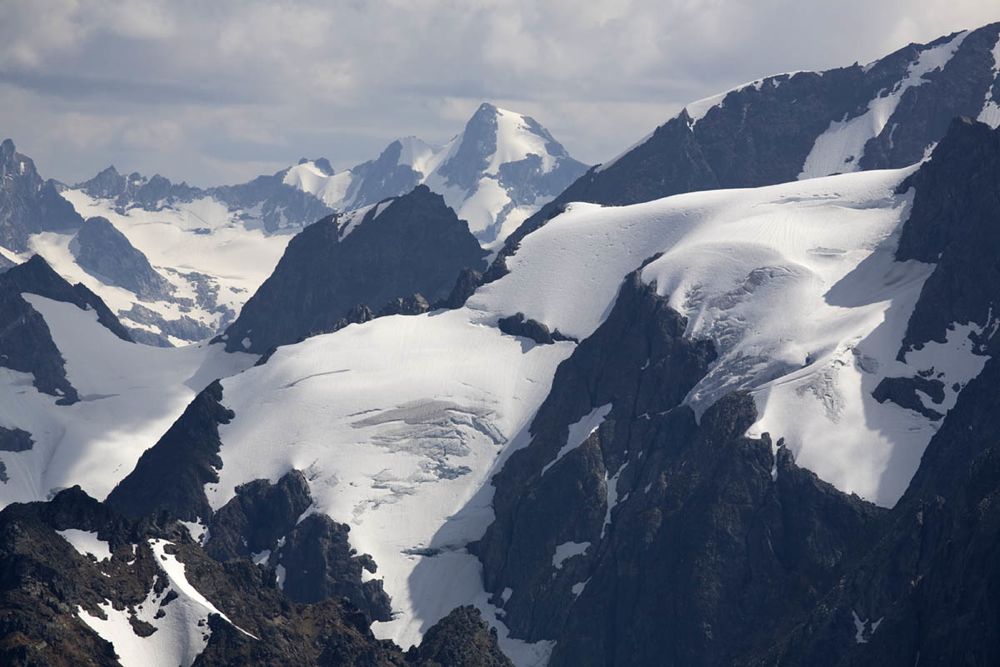
North Cascades National Park is one of the most glaciated places in the United States, not counting Alaska. It is home to over 300 active glaciers, making it a true natural treasure. Glaciers play an important role in maintaining the park’s ecosystem, regulating water levels in rivers and providing drinking water to many communities.
Glaciers in the North Cascades are powerful ancient masses of ice that move slowly, carving valleys in the mountains and creating stunning scenery. The park’s most famous glaciers are:
Boston Glacier, one of the park’s largest glaciers, is located at the top of Boston Peak Mountain. Its massive ice sheet and rugged landscape attract climbers and adventurers eager to see this natural wonder. The glacier descends steep slopes and forms majestic ice fields.
This glacier is located on the eastern slope of Mount Sahale and is a popular climbing destination. The Quien Sabe Glacier is one of the most accessible to hikers, offering stunning views of alpine meadows and mountain tops.
The Eldorado Glacier is known for its unusual shape and beauty. It attracts both experienced climbers and photographers who want to capture its majesty. Eldorado Glacier is one of the most beautiful places to hike and climb in the park.
Impact of glaciers on the ecosystem
Glaciers play an important role in maintaining the ecosystem of the North Cascades. As glaciers melt in the spring and summer, they replenish the park’s rivers and lakes with fresh meltwater. This is important for native flora and fauna, as well as maintaining water resources throughout the year. Glaciers also provide the cold water flows necessary for the survival of many fish species, including salmon.
Routes to the glaciers
Several routes are available for hikers to see the glaciers of the North Cascades:
This route is one of the most popular in the park. It passes through scenic alpine meadows leading to glaciers, including the Sahale Glacier. The views from this trail are simply mesmerizing – mountain ranges, glaciers and alpine lakes make for great stopping points and photos.
- Hidden Lake Trail
This trail leads to a famous glacier hidden among the mountain peaks. The trail leads through dense forests, rocky slopes, and open alpine meadows with views of majestic glaciers.
The glaciers of the North Cascades are a unique natural attraction in Washington State, a symbol of the power and beauty of wilderness. They attract hikers, climbers, and photographers from around the world as an important part of the park’s ecosystem. Visiting these glaciers is an opportunity to enjoy amazing views and feel connected to nature.
2. Alpine Lakes
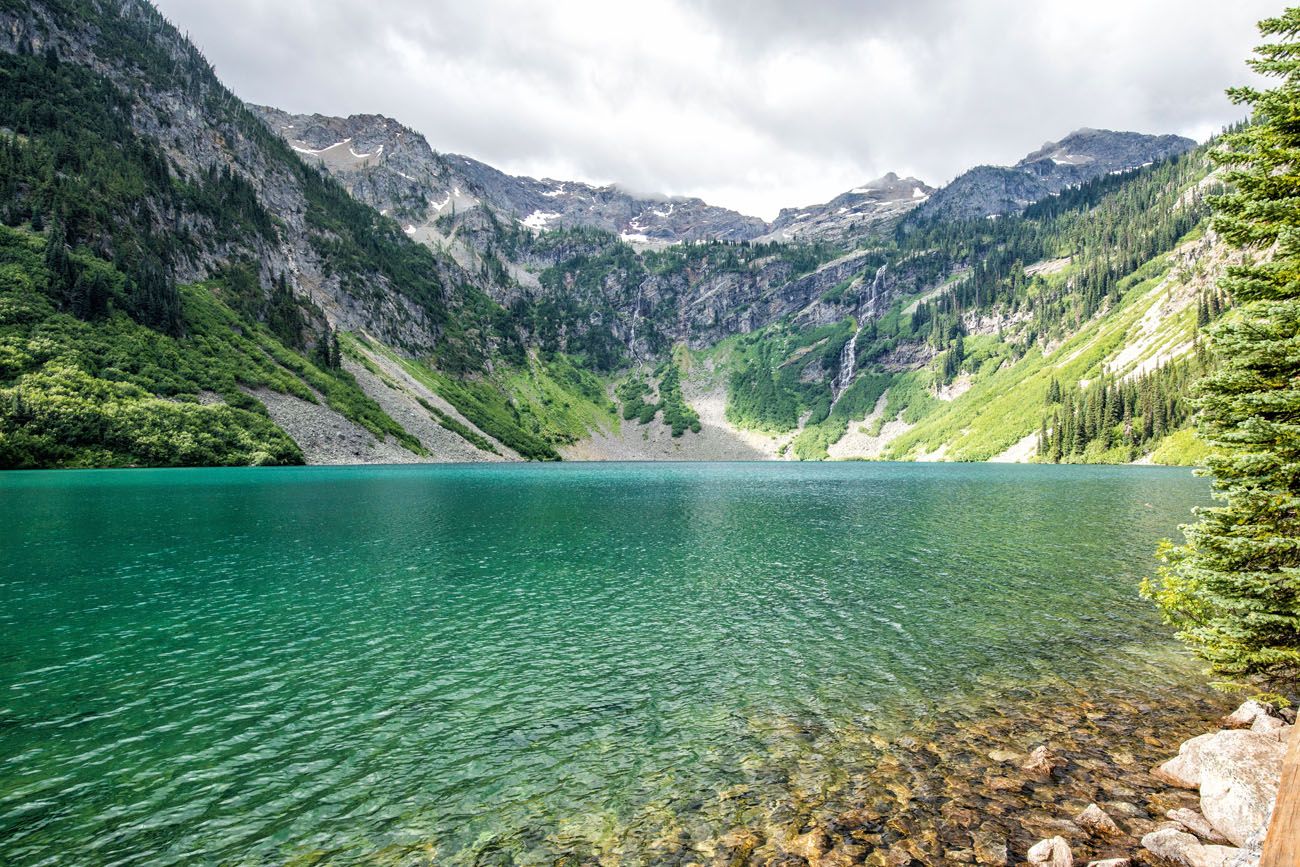
The North Cascades is one of the most scenic and wild places in Washington State, and one of its treasures are its many alpine lakes. These crystal clear bodies of water, hidden among high mountain peaks and dense forests, attract nature lovers, tourists and photographers from all over the world.
The beauty and uniqueness of alpine lakes
The alpine lakes of the North Cascades are characterized by incredible purity and transparency. Their cold waters, fed by glacial meltwater, create stunning landscapes, reflecting the surrounding mountains, forests and blue skies. Many of these lakes are located at high altitudes, making them relatively difficult to access, but the effort to visit them is worth it – the views and the experience lingers in the memory for years to come.
Some lakes are surrounded by alpine meadows that are carpeted with wildflowers in spring and summer, while others are hidden among rocks and rocky slopes, giving them a particularly rugged and majestic appearance.
The best alpine lakes to visit
Colchuck Lake is one of the most famous alpine lakes in the North Cascades. Located in the Enchantments area, it attracts tourists with its bright blue waters and breathtaking views of neighboring Dragontail Peak and Colchuck Peak. The lake’s water is so clear that its bottom can be seen many meters deep. The lake can be reached via a popular trail that, although it requires effort, rewards hikers with spectacular views.
This lake is located in the Washington Pass area and is one of the gems of the North Cascades. The waters of the lake have a rich turquoise color, which is created by the reflection of the rocks and mineral-rich water. The hiking trail to the lake is fairly easy and suitable for hikers of all levels, making it a popular destination for families.
This lake is located deep in the Enchantments and is one of the most difficult to access, but also one of the most scenic. The lake is surrounded by glaciers and high cliffs, and its waters are so clear and cold that it resembles a dreamscape. Traveling here is a challenge even for experienced hikers, but its beauty makes it a must-see for wildlife enthusiasts.
These are a pair of lakes located next to each other at an altitude of about 1,800 meters. They are surrounded by dense forests and mountain peaks, and are the perfect place for camping and relaxing vacations. The clear waters and seclusion make Twin Lakes popular with those seeking peace and quiet.
The lake is located near Twin Lakes and is also popular with campers. The walk to the lake passes through beautiful wooded areas and open alpine meadows where wildflowers bloom in the summer. The water in the lake stays cool even during the hot summer months, making it a popular spot for picnics and swimming.
Natural conditions and ecosystem
The alpine lakes of the North Cascades play an important role in maintaining the ecosystem of this region. They are a source of drinking water for many animals and plants, and they feed rivers and streams, creating important waterways for the forests and plains downstream. The lakes also provide habitat for many species of fish, including protected populations of salmon.
The area surrounding the alpine lakes is rich in wildlife. Mountain goats, deer, bears, and a variety of birds such as eagles and falcons can be found here. The lakes in the North Cascades mountains are the perfect place to observe nature and immerse yourself in the pristine wilderness.
Recommendations for hikers
Visiting the alpine lakes of the North Cascades requires some preparation. Many of the lakes are at altitude, and to get to them, you will need to walk on steep and rocky trails. Therefore, hikers are advised to have comfortable shoes, adequate water, and be prepared for variable weather conditions. It is important to remember to protect nature – always follow Leave No Trace principles and keep these unique natural corners clean.
The alpine lakes of the North Cascades are true natural gems of Washington State. Their crystal clear waters surrounded by mountain scenery provide unique opportunities for hikers and nature lovers. These lakes attract both novice and experienced travelers, and become unforgettable destinations for anyone willing to venture into this beautiful and rugged wilderness.
3. Wildlife

One of the wildest and most scenic parts of Washington State, the North Cascades is a vast mountainous region with a rich ecosystem and an amazing variety of wildlife. This national park and its surroundings are home to many unique species of animals that have adapted to life in the harsh environment of mountains, forests, and glaciers. The North Cascades is home to a wide variety of animals including black bears, cougars, wolverines, and deer. Rare bird species such as the white-headed eagle and spotted owl can also be found here.
Mammals of the North Cascades
The mountainous areas of the North Cascades provide an important refuge for large carnivores and herbivores, as well as many other mammals. Here are some of the most famous animals that can be found in this region:
- Black Bear
Black bears are some of the most famous inhabitants of the North Cascades. These large predators are most often found in wooded areas and along rivers, where they feed on fish, berries, and roots. Bears are active during the summer and fall months, preparing for winter hibernation, and can often be seen while walking through the park.
- Grizzlies
Although the grizzly population in the North Cascades has been greatly reduced, this menacing and majestic predatory cat is still found in the most remote and inaccessible corners of the park. Grizzlies are protected by law, and sightings are a rare and spectacular opportunity.
- Mountain goats
Mountain goats live at altitude and are found on steep rocky cliffs and in alpine areas. These animals have an amazing ability to climb steep mountain slopes, thanks to their sharp hooves and strong limbs. Their thick fur protects them from the cold, allowing them to survive in the harsh conditions of the high mountains.
- Snow goat
The snow goat is similar to the mountain goat, but lives in harsher and colder conditions at higher altitudes. Its dense coat helps keep it warm even during the winter months when snow covers the mountains.
- Moose
Moose, the largest members of the deer family, are found in parts of the North Cascades. They often roam the marsh and grassland areas of the park, especially in the lower parts, along rivers and lakes. Moose are herbivores that feed on grass, leaves, and aquatic plants.
- Deer
Black-tailed deer and white-tailed deer inhabit the forests of the North Cascades. They are often seen at forest edges and along trails. These animals play an important role in maintaining the region’s ecosystem by being part of the food chain for large carnivores.
- Bobcats and mountain lions
Bobcats and mountain lions (cougars) can be found in the dense forests of the North Cascades. These predators prey on small animals and deer, keeping populations balanced in this wild region. They generally avoid humans and are nocturnal.
Birds of the North Cascades

The North Cascades are also known for their variety of birds, including both raptors and songbirds. Here are some of the more notable species:
- White-headed Eagle
White-headed eagles are a symbol of the United States and are often seen in the North Cascades, especially near rivers and lakes where they hunt for fish. These majestic birds, with wingspans of up to 2 meters, are some of the largest and most powerful raptors among the region’s birds.
- Peregrine Falcon
The fastest bird on the planet, the peregrine falcon lives in the rocky areas of the park. These raptors prey on other birds by attacking them from the air at breakneck speed.
- Gray owl
This rare and protected species is found in the forests of the North Cascades. The gray owl is nocturnal and is an important predator in the forest ecosystem. They can be heard during the night hours as they hunt for rodents.
- Cedar Redpoll
This small songbird is common in the forests of the North Cascades and delights tourists with its melodious trills. It prefers to settle in coniferous forests and feeds on seeds and insects.
Fish and aquatic life
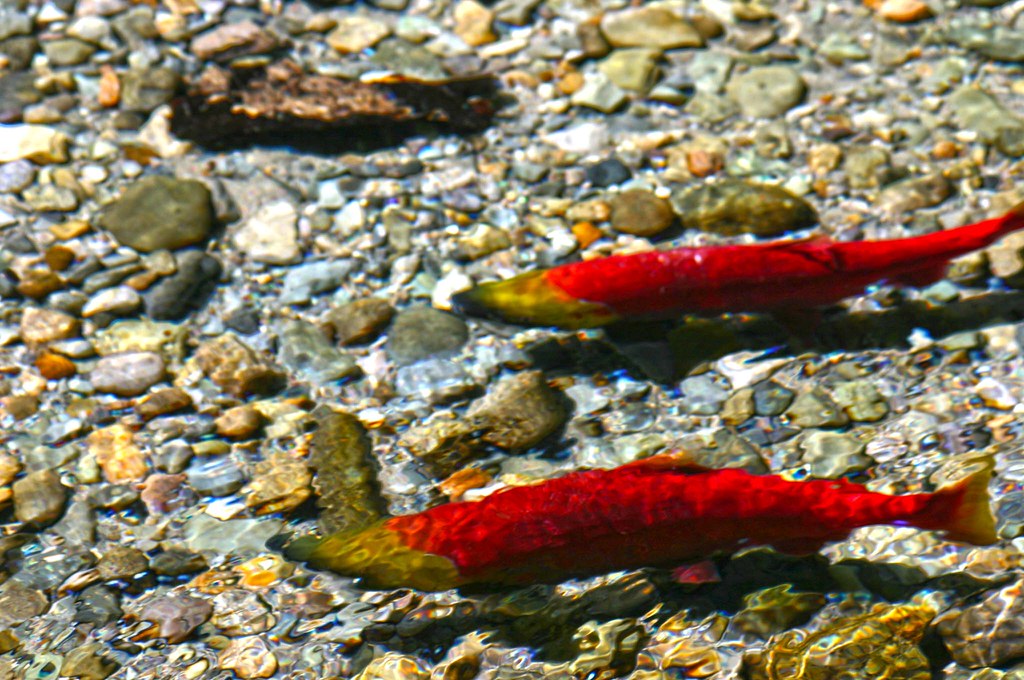
The North Cascades is also famous for its rivers and lakes, which are rich in fish and other aquatic life:
- Salmon
Salmon are one of the most important fish species in the region’s ecosystem. Various species of salmon, such as chinook and chum salmon, migrate through the rivers of the North Cascades as they return to spawn. Salmon play an important role not only in the ecosystem, but also in the indigenous cultures of the region.
- Trout
The rivers and lakes of the North Cascades are home to many species of trout, including rainbow trout and brook trout. These fish are the focus of recreational anglers as well as an important part of the local ecosystem.
Protected species and wildlife protection program
The North Cascades is an important wildlife refuge that protects many endangered species. The North Cascades Wildlife Conservation Program aims to conserve biodiversity and protect the region’s key ecosystems.
- Canada lynx
This northern forest predator is protected in Washington State. The Canada lynx is rarely seen in the wild because it is threatened by deforestation and declining prey populations.
- Whitehead Salmon Fish
This rare fish, also known as steelhead salmon, is protected by law and is the focus of environmental programs. Its populations are declining due to loss of spawning habitat.
Hiking Trails
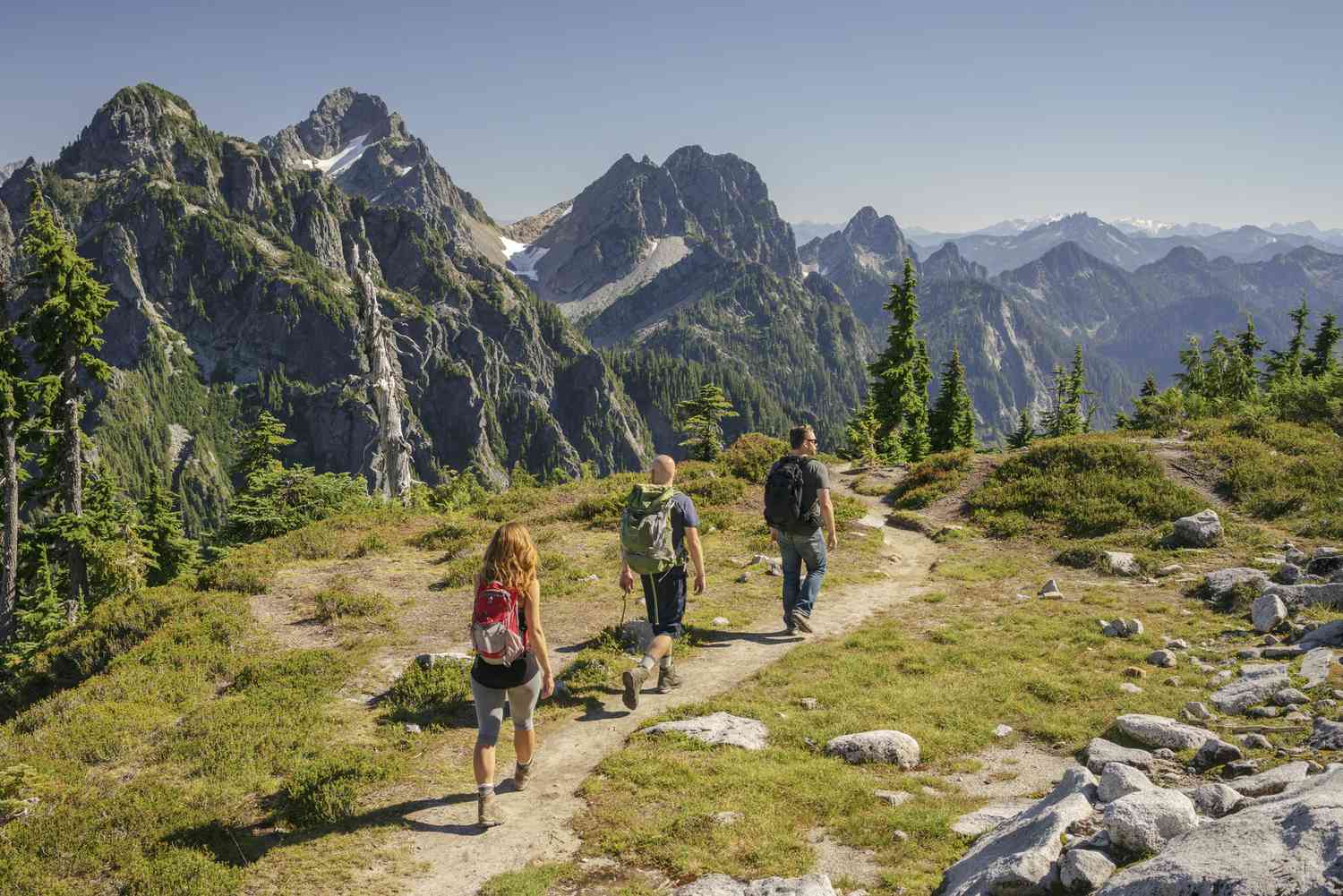
The North Cascades is one of the most scenic and spectacular national parks in the United States. It offers a variety of hiking opportunities, from easy walks to challenging trails through wild alpine landscapes. The North Cascades Mountains are home to dozens of hiking trails that offer magnificent views of mountain ranges, glaciers, lakes, and dense forests. The region also attracts wildlife enthusiasts, photographers and those seeking solitude in the lap of nature.
Here are some of the most popular hiking trails in the region that expose travelers to the beauty of the North Cascades.
Maple Pass Loop
- Length: 7.2 miles (about 11.6 kilometers)
- Difficulty: Medium
- Overview: This circular trail is considered one of the most beautiful and popular trails in the North Cascades. The trail passes through scenic alpine meadows, dense forests, and climbs to spectacular panoramic views of mountains and lakes. In the fall, the area is especially beautiful thanks to the vibrant colors of the foliage.
- Highlights include Lake Ann, views of Liberty Bell Peak and the North Cascades.
Cascade Pass Trail
- Length: 7.4 miles (about 12 km) round trip
- Difficulty: Medium
- Overview: This trail starts at an elevation of 1,800 feet and leads to one of the most famous passes in the North Cascades, Cascade Pass. There are glacier views and scenic mountain scenery throughout the trail.
- Highlights: Views of glaciers, mountain peaks, possible sightings of wildlife such as mountain goats.
Hidden Lake Lookout
- Length: 8.2 miles (about 13.2 km) round trip
- Difficulty: Difficult
- Overview: This trail offers fantastic views of alpine lakes and distant peaks. At the top of the trail is an old firemen’s observation post, which now serves as a shelter for hikers. Despite the difficulty of the route, the reward is stunning views of the hidden lake and mountain ranges.
- Highlights: Observation Post, hidden lake, panoramic views of the North Cascades.
Sahale Arm Trail
- Length: 12 miles (about 19 km) round trip
- Difficulty: Medium
- Overview: This trail is a continuation of the Cascade Pass trail and leads further into the alpine zone, passing glaciers and rocky peaks. It requires excellent fitness, but the glacier views and alpine scenery are worth it.
- Highlights: Views of the Sahalee Glacier and surrounding mountains, wildlife.
Blue Lake Trail
- Length: 4.4 miles (about 7 km) round trip
- Difficulty: Easy
- Overview: This easy trail leads to a scenic blue lake surrounded by high cliffs and alpine meadows. The trail is ideal for a family hike or for those who want to enjoy a short walk in a beautiful setting.
- Highlights include Blue Lake, views of Liberty Bell Peak and other mountain peaks.
Thunder Creek Trail
- Length: Up to 12 miles (up to 19 km) round trip (shorter options available)
- Difficulty: Medium
- Overview: This trail follows Thunder Creek through dense forest and crystal clear creeks. The trail gradually gains elevation and offers beautiful views of waterfalls, mountains and the river. This is a great trail for multi-day camping trips with tents.
- Highlights: Waterfalls, Thunder Creek, alpine views.
Heather-Maple Pass Loop
- Length: 7.2 miles (about 11.6 km) round-trip.
- Difficulty: Medium
- Overview: This circular route passes through scenic alpine meadows and forests, and offers spectacular views of mountain peaks and lakes. This route is especially beautiful in the fall, when the trees turn bright autumn colors.
- Highlights: Lake views, fall scenery, alpine meadows.
Tips for hikers in the North Cascades
- Dress in layers: The weather in the mountains can change very quickly, so it is important to dress in multiple layers so you can regulate your body temperature.
- Stock up on water and food: Many areas of the North Cascades do not have water sources, so it is important to bring enough water and food for all hikers.
- Respect for wildlife: It is important to leave nature as you found it and not disturb the ecosystem. Do not feed wild animals and use caution when encountering them.
- Summer Season: The best time to visit the North Cascades is during the summer and early fall when the trails are snow-free and open to hikers.
The North Cascades is a true paradise for hikers and nature lovers. The variety of trails allows everyone to find the right option for their fitness level, whether it’s an easy walk to the lake or a challenging multi-day hike.
How to get there
North Cascades National Park is located two hours north of Seattle. Access to the park is via the North Cascades Highway (SR 20), which runs through the center of the park and provides access to major viewpoints and trails.
Activities in the park
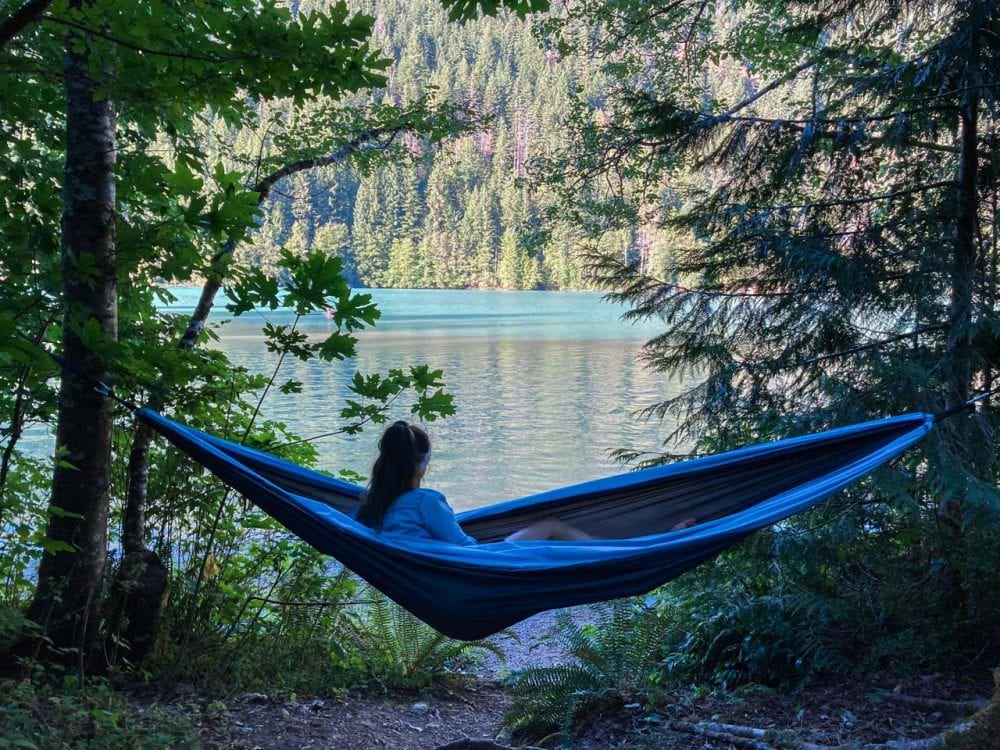
- Hiking and Mountaineering
The park is an ideal place for hiking and mountain climbing. Routes of varying difficulty are suitable for beginners and experienced hikers alike.
- Camping
There are many equipped campgrounds in the North Cascades, such as Newhalem Creek Campground and Colonial Creek Campground. There are also wilderness camping areas for those seeking solitude and complete integration with nature.
- Wildlife Watching
The park is home to many rare animal species, and spotting them becomes a fascinating activity for visitors. Bring your binoculars and cameras to capture unique moments.
North Cascades National Park is one of the best places for outdoor recreation in Washington State. When you come here, you can not only enjoy the gorgeous scenery, but also feel truly secluded and connected to nature.
Benefits of moving to Washington State
Washington is a place where nature is at arm’s length. It is one of the few states in the US where you can find such diverse ecosystems in a relatively small area. Outdoor recreation is an integral part of life for locals. The excellent ecology, a large number of parks, forests and water bodies make Washington an ideal place to live for those who appreciate an active lifestyle and want to be close to nature.
Our moving company is ready to help you with your move to this wonderful region, taking care of all the worries associated with the transportation process. We will make your move to Washington State easy and comfortable.
Contact us in any way:
Telephone: (888) 282-6940



